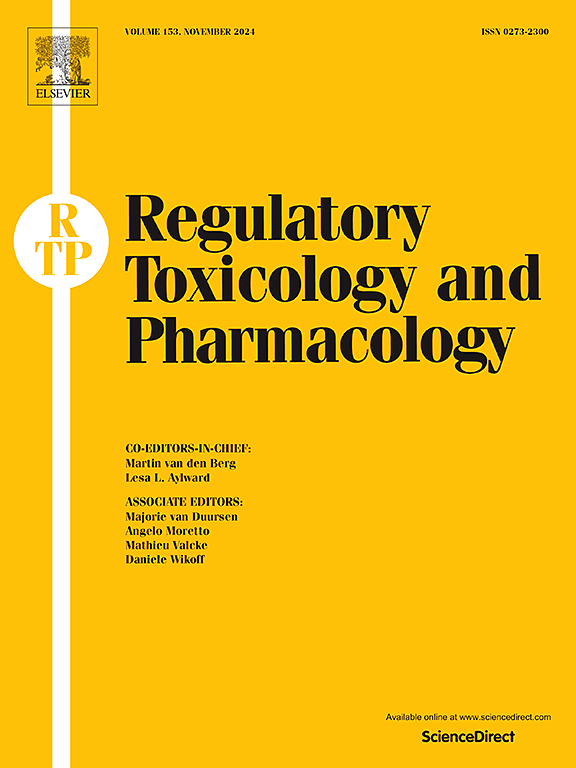Radon activity levels in beverages and drinking water in Jazan, Saudi Arabia: a health risk assessment
IF 3.5
4区 医学
Q1 MEDICINE, LEGAL
引用次数: 0
Abstract
This study investigated radon concentrations in water and soft drinks from the Jazan region of Saudi Arabia using a CR39 detector. Sample analysis revealed radon concentrations ranging from 1.65 to 5.70 Bq/L in drinking water and 1.60–3.78 Bq/L in soft drinks, likely influenced by industrial processing. All measured values were below international safety thresholds, including USEPA limit 11.1 Bq/L and WHO guideline 100 Bq/L. Annual effective doses (AEDs) were calculated for ingestion and inhalation. Ingestion posed the greatest risk: 24.08 μSv/yr (water) and 20.32 μSv/yr (soft drinks). Inhalation doses were lower: 8.31 μSv/yr and 7.01 μSv/yr, respectively, and remained within the WHO and ICRP limits (100 μSv/yr). Ingestion doses slightly exceeded the reference value of the Scientific Committee on the Effects of Atomic Radiation (10 μSv/yr). The results highlight that ingestion is the main route of exposure and underscore the need for continuous monitoring and quality control. This is the first comprehensive assessment of radon in beverages from Jazan and provides vital baseline data for health policy and risk assessment in Saudi Arabia.

沙特阿拉伯吉赞市饮料和饮用水中的氡活动水平:健康风险评估
本研究使用CR39探测器调查了沙特阿拉伯吉赞地区水和软饮料中的氡浓度。样本分析显示,饮用水中的氡浓度为1.65至5.70 Bq/L,软饮料中的氡浓度为1.60至3.78 Bq/L,可能受到工业加工的影响。所有测量值均低于国际安全阈值,包括USEPA限值11.1 Bq/L和WHO指南100 Bq/L。计算摄入和吸入的年有效剂量(aed)。摄入的风险最大:24.08 μSv/yr(水)和20.32 μSv/yr(软饮料)。吸入剂量较低,分别为8.31 μSv/yr和7.01 μSv/yr,保持在WHO和ICRP限值(100 μSv/yr)内。摄入剂量略高于原子辐射效应科学委员会的参考值(10 μSv/yr)。结果表明,摄入是主要的暴露途径,并强调了持续监测和质量控制的必要性。这是对吉赞市饮料中的氡进行的首次全面评估,为沙特阿拉伯的卫生政策和风险评估提供了重要的基线数据。
本文章由计算机程序翻译,如有差异,请以英文原文为准。
求助全文
约1分钟内获得全文
求助全文
来源期刊
CiteScore
6.70
自引率
8.80%
发文量
147
审稿时长
58 days
期刊介绍:
Regulatory Toxicology and Pharmacology publishes peer reviewed articles that involve the generation, evaluation, and interpretation of experimental animal and human data that are of direct importance and relevance for regulatory authorities with respect to toxicological and pharmacological regulations in society. All peer-reviewed articles that are published should be devoted to improve the protection of human health and environment. Reviews and discussions are welcomed that address legal and/or regulatory decisions with respect to risk assessment and management of toxicological and pharmacological compounds on a scientific basis. It addresses an international readership of scientists, risk assessors and managers, and other professionals active in the field of human and environmental health.
Types of peer-reviewed articles published:
-Original research articles of relevance for regulatory aspects covering aspects including, but not limited to:
1.Factors influencing human sensitivity
2.Exposure science related to risk assessment
3.Alternative toxicological test methods
4.Frameworks for evaluation and integration of data in regulatory evaluations
5.Harmonization across regulatory agencies
6.Read-across methods and evaluations
-Contemporary Reviews on policy related Research issues
-Letters to the Editor
-Guest Editorials (by Invitation)

 求助内容:
求助内容: 应助结果提醒方式:
应助结果提醒方式:


